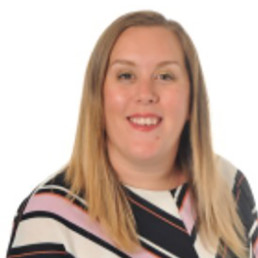
Written by Ruth Argyle
Ruth has been a teacher for 16 years and in her most recent role in ITT at KNSTE she is responsible for leading their Diversity, Equity and Inclusion focus.
Keele and North Staffordshire Education (KNSTE) began a journey of reflection, education and improvement in relation to DEI around 12 months ago. Back in the day we were all a little unsure of online working and when cameras were glitchy, backgrounds were chaotic and we all left ourselves on mute regularly. I then had the absolute pleasure of seeing Hannah Wilson of Diverse Educators speak at a NASBTT online conference. I was immediately and irreversibly inspired by her words. As an organisation we had taken our eye off the important issues that Hannah spoke about and it was time to refocus.
The timing couldn’t have been better. We rewrite our KPIs around March and this gave our work the impetus it needed to have real impact. We thought long and hard, consulting with many of our stakeholders about how best to concentrate our efforts in this area and we decided on three drivers for change:
- Marketing and Recruitment
- Our Curriculum
- Associate Teacher (AT) Experience.
We have been ambitious with our plan and have decided on working towards sustainable, internal change that will have impact for years to come whilst being mindful of resisting quick fixes that may ‘plug a gap’ but do not have long term impact. We didn’t want to buy in someone to deliver a one-off session for us, we invested in our staff and this involved a lot of CPD and big learning moments together. It may seem simple but even just deciding together on what order the letters in the acronym would go was significant. In the early days of this project we would use all manner of combinations of the letters: EDI, DEI, IDE… and would hear it said differently at different events and training we went to. Also, sometimes the E stood for Equity and sometimes it stood for Equality, sometimes people meant the D to mean Diversity, other times people were actually talking about Disability. We needed a shared language to ensure we had a shared understanding on what we were trying to achieve.
We worked as a team to collectively improve our understanding of the terms and what we could be doing as an initial teacher training and education (ITTE) provider. We have many responsibilities; responsibility to the trainees we train each year, a responsibility to the partnership schools and the employing leaders in those schools, a responsibility to the children in those classrooms and indeed a responsibility to the profession as a whole. It was and continues to be scary at times but to quote Hannah “we needed to get comfortable feeling uncomfortable” and work through it as a team. As public professionals we feel the weighty responsibility of creating a culture of belonging in our profession. We are mindful of the Equalities Act 2010 and the 9 Protected Characteristics and will work tirelessly to ensure that there is a place for everyone in our profession.
In the last 12 months we have made many positive changes. We have set up affinity groups for our alumni, training our Teacher Educators about DEI and our expectations of them when hosting a trainee, being more aware of our marketing and recruitment processes to consider elements such as neurodiversity and inclusivity and these are all having an impact within our organisation. Despite this good work we are advocates of the notion that we are lifelong learners. We know without doubt that there is more learning to be achieved, more work to be done and more improvements to make so that everyone who comes into contact with our organisation feels that sense of belonging which we are striving for. As we enter Year 2 of our 3-year action plan we are hopeful for continued impact and improvements and will continually self-reflect and be outward looking to achieve this.

